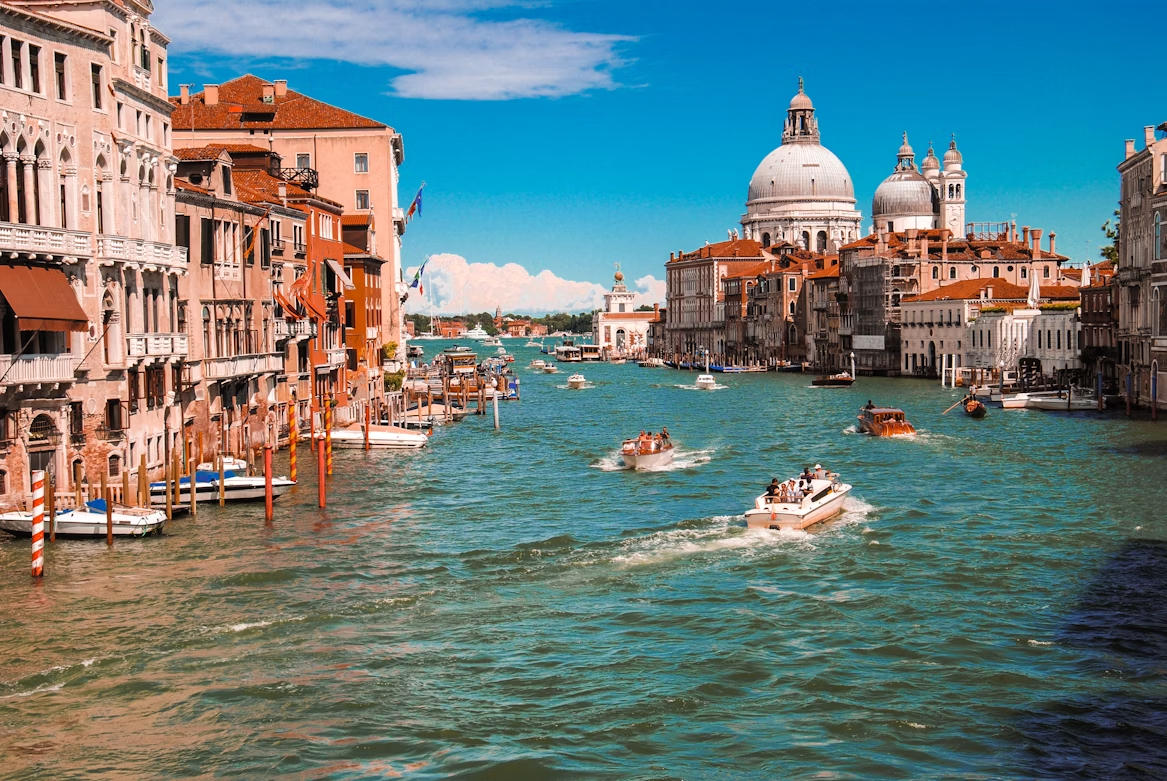Italy is a masterpiece of history, culture, and natural beauty. From the ancient ruins of Rome to the sparkling canals of Venice and the sun-drenched Amalfi Coast, the country is a treasure trove for travelers. Whether you’re chasing Renaissance art, indulging in world-class cuisine, or hiking through alpine meadows, the places to visit in Italy cater to every kind of explorer.
In this guide, uncover the 10 best tourist attractions in Italy, covering iconic cities, hidden medieval towns, and breathtaking natural wonders. Plan your dream itinerary with this list of unforgettable places to visit in Italy.
1. Rome (Colosseum & Vatican)
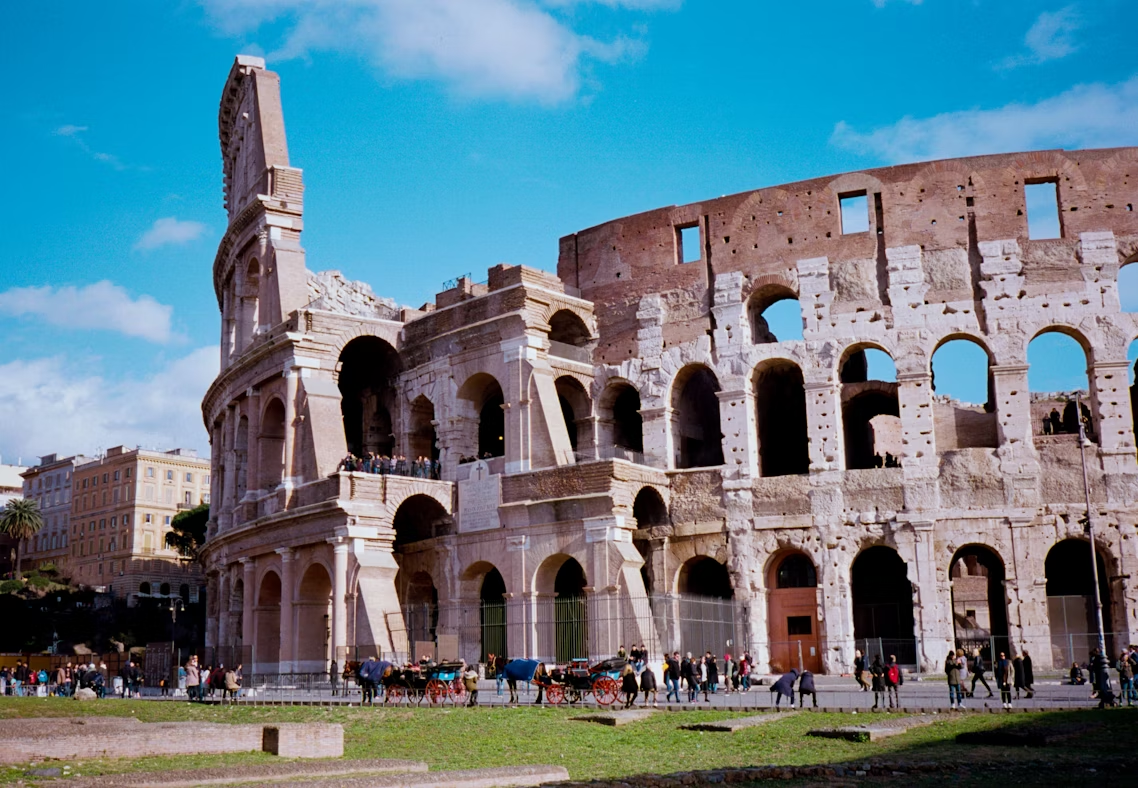
Italy’s eternal capital, Rome, is a living museum filled with architectural marvels, from ancient ruins to Renaissance art. The Colosseum, an iconic amphitheater from 80 AD, and Vatican City—home to St. Peter’s Basilica and the Sistine Chapel—offer a journey through time that’s unmatched anywhere in the world.
Location:Central Rome
Entry Fee:
- Colosseum (with Roman Forum & Palatine Hill): €18 or approx. INR 1,620
- Vatican Museums & Sistine Chapel: €17 or approx. INR 1,530
Timing:
- Colosseum: 8:30 AM – 7:10 PM
- Vatican Museums: 8:00 AM – 8:00 PM (closed Sundays)
Estimated Time to Explore: Full day
Don’t Miss:
- The Gladiator arena inside the Colosseum
- Michelangelo’s “The Last Judgment” in the Sistine Chapel
- St. Peter’s Dome view of the Vatican and Rome
How to Reach:
- Metro Line B to Colosseum Station (for the Colosseum)
- Metro Line A to Ottaviano Station (for Vatican)
Insider Tip: Book skip-the-line tickets online to avoid long queues, especially in peak seasons.
Suggested Read: Italy Visa for Indians
2. Venice
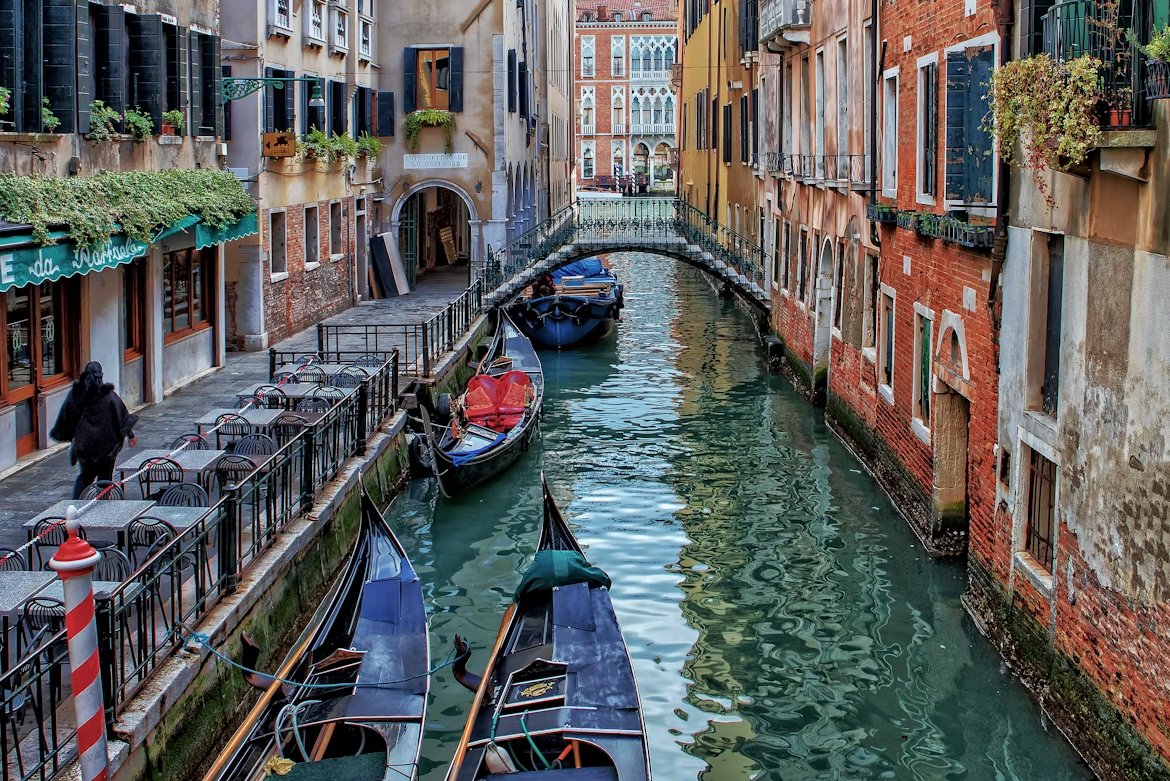
Venice is one of the most romantic places in Italy where canals replace roads and art flourishes around every corner. Built on over 100 islands, the city captivates visitors with gondola rides, baroque palaces, and stunning sunset views over the Grand Canal. St. Mark’s Basilica and the Doge’s Palace showcase the city’s opulent past, while hidden alleys reveal charming cafes and artisan shops.
Location:Northeastern Italy, Veneto region
Entry Fee:
- St. Mark’s Basilica: Free (Museum access €5)
- Doge’s Palace: €25 or approx. INR 2,250
Timing:
- Most attractions open between 9:00 AM and 6:00 PM
Estimated Time to Explore: 1–2 days
Don’t Miss:
- Sunset gondola ride through quiet canals
- View from St. Mark’s Campanile
- Exploring hidden alleys and artisan mask shops
How to Reach:
- Train to Venezia Santa Lucia Station
- Vaporetto (water bus) lines to move around the city
Insider Tip: Visit in the shoulder season (April or October) to avoid flooding and heavy tourist crowds.
Suggested Read: Italy Visa Appeal for Indians
3. Florence
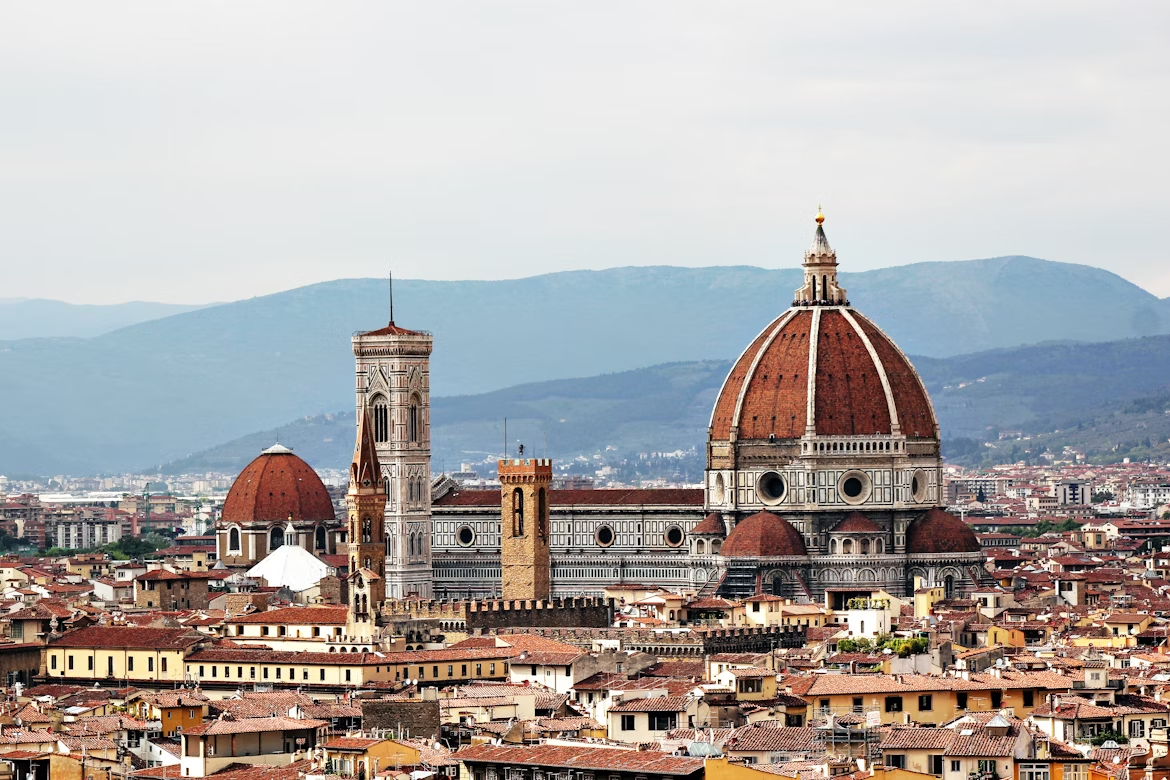
Birthplace of the Renaissance, Florence is a feast for art lovers looking for cultural attractions in Italy. From Michelangelo’s David to the grandeur of the Duomo, Florence offers a rich blend of cultural treasures in a compact, walkable city. Every piazza, palace, and bridge tells a story, making Florence a living museum steeped in beauty and history.
Location:Tuscany region, Central Italy
Entry Fee:
- Uffizi Gallery: €12 or approx. INR 1,080
- Florence Cathedral Dome: €20 or approx. INR 1,800
Timing:
- Uffizi: 8:15 AM – 6:30 PM (closed Mondays)
- Duomo Complex: 9:00 AM – 7:00 PM
Estimated Time to Explore: 2–3 days
Don’t Miss:
- Climb the Duomo for sweeping views
- Botticelli’s “The Birth of Venus” at the Uffizi
- Ponte Vecchio’s jewelry shops and river views
How to Reach:
- Train to Firenze Santa Maria Novella Station
- Walking distance to most major sights
Insider Tip: Reserve Uffizi and Duomo Dome tickets well in advance; both sell out quickly.
4. Amalfi Coast
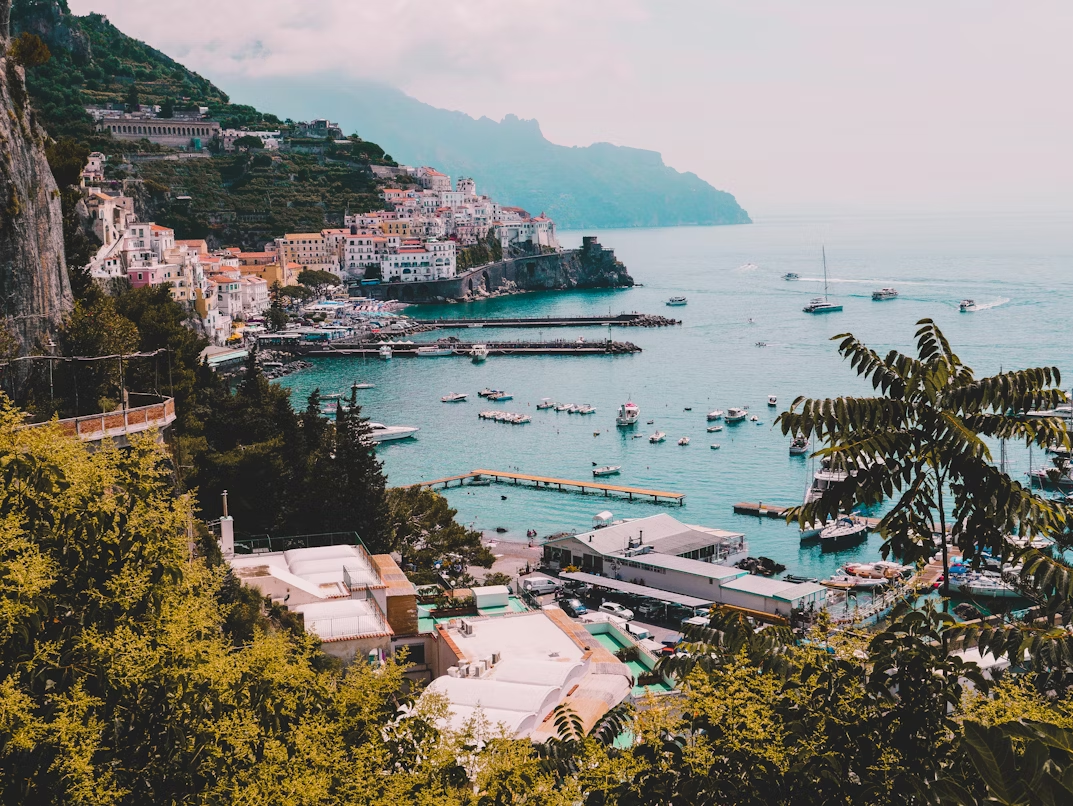
The Amalfi Coast is the stuff of postcards—pastel villages clinging to cliffs, turquoise waters, and lemon groves under the Mediterranean sun. Positano, Amalfi, and Ravello are just a few of the gems along this scenic stretch of coastline. Winding coastal roads offer breathtaking views at every turn, while charming beaches and cliffside cafes invite you to slow down and savor the moment.
Location:Southern Italy, Campania region
Entry Fee: Free to visit towns; boat tours and villa entries vary
Timing: Best between April and October
Estimated Time to Explore: 2–3 days
Don’t Miss:
- Drive along the SS163 Amalfi Highway
- Boat tour to the Emerald Grotto
- Sunset dining in Positano
How to Reach:
- Train to Salerno, then bus or ferry to towns
- Ferry from Naples or Sorrento
Insider Tip: Stay overnight in a cliffside villa to enjoy quiet mornings before the crowds arrive.
5. Milan
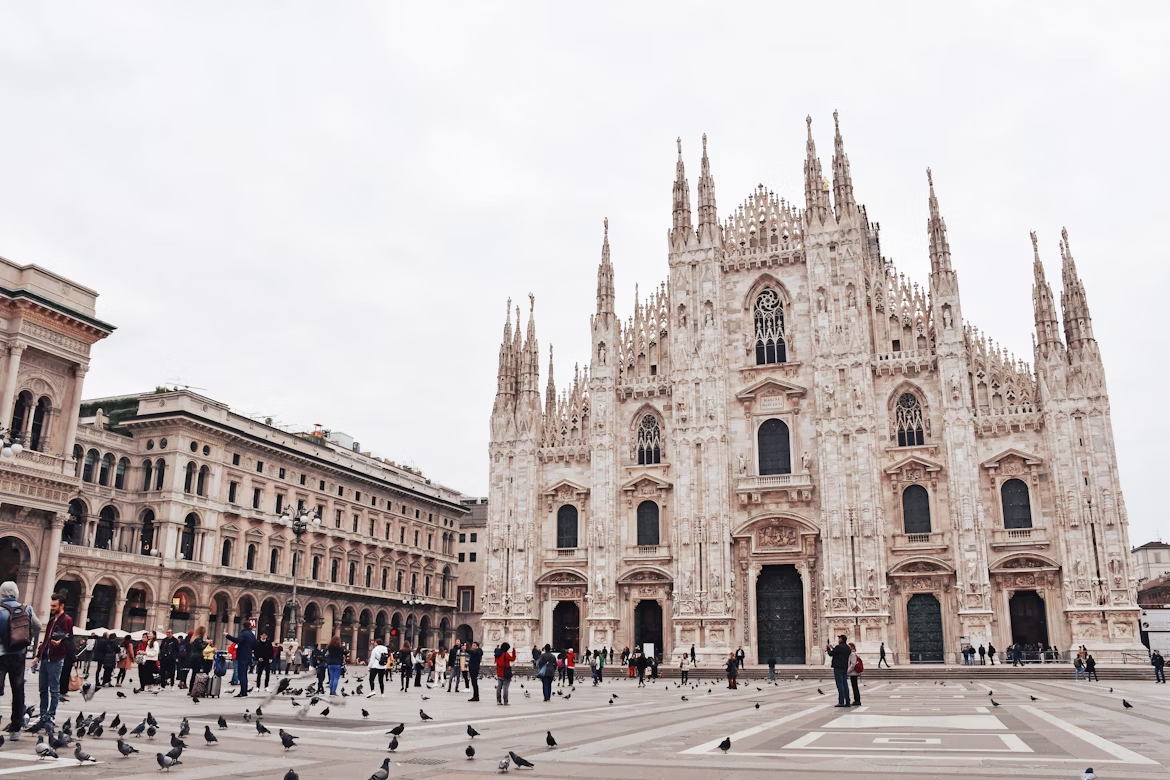
Milan, Italy’s fashion and finance hub, blends historic splendor with modern sophistication. From the Gothic masterpiece of the Duomo to Leonardo da Vinci’s Last Supper, the city is a dynamic mix of tradition and innovation. High-end shopping in the Galleria Vittorio Emanuele II and cutting-edge design in districts like Brera make Milan a trendsetter in every sense.
Location:Northern Italy, Lombardy region
Entry Fee:
- Duomo & Rooftop: €16 or approx. INR 1,440
- Santa Maria delle Grazie (Last Supper): €15 or approx. INR 1,350
Timing:
- Duomo: 9:00 AM – 7:00 PM
- Last Supper: Time-slotted entry only
Estimated Time to Explore: 1–2 days
Don’t Miss:
- View from the Duomo rooftop terraces
- Galleria Vittorio Emanuele II shopping arcade
- Brera Art Gallery
How to Reach:
- Train to Milano Centrale
- Metro lines to reach major landmarks
Insider Tip: Book Last Supper tickets months in advance—viewings are limited to 15 minutes per group.
Suggested Read: Italy Visa Extension for Indians
6. Cinque Terre
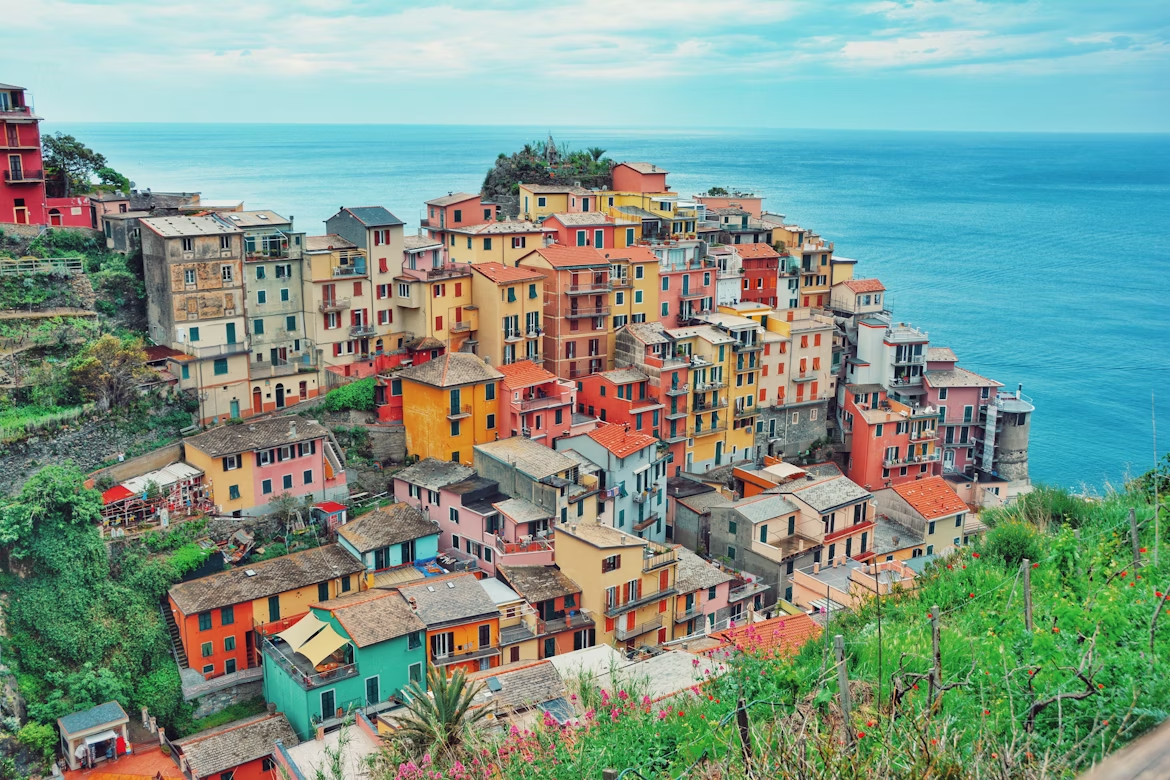
Cinque Terre is a string of five pastel-hued villages perched on cliffs above the Ligurian Sea. These UNESCO-listed gems—Monterosso, Vernazza, Corniglia, Manarola, and Riomaggiore—are perfect for hiking, photography, and beach lovers. The scenic Sentiero Azzurro trail connects the villages with breathtaking views at every turn, while local trattorias serve up fresh seafood and pesto.
Location:Liguria region, Northwestern Italy
Entry Fee: Free to enter towns; Cinque Terre Card (hiking & trains): €7.50 or approx. INR 675
Timing: Best from April to October
Estimated Time to Explore: 2–3 days
Don’t Miss:
- Sunset in Manarola
- Hike the Blue Trail (Sentiero Azzurro)
- Wine tasting in Corniglia
How to Reach:
- Train to La Spezia, then Cinque Terre Express train
- Hiking trails or ferries connect the towns
Insider Tip: Avoid cars—towns are pedestrian-only and best explored by foot or train.
7. Tuscany (Val d’Orcia)
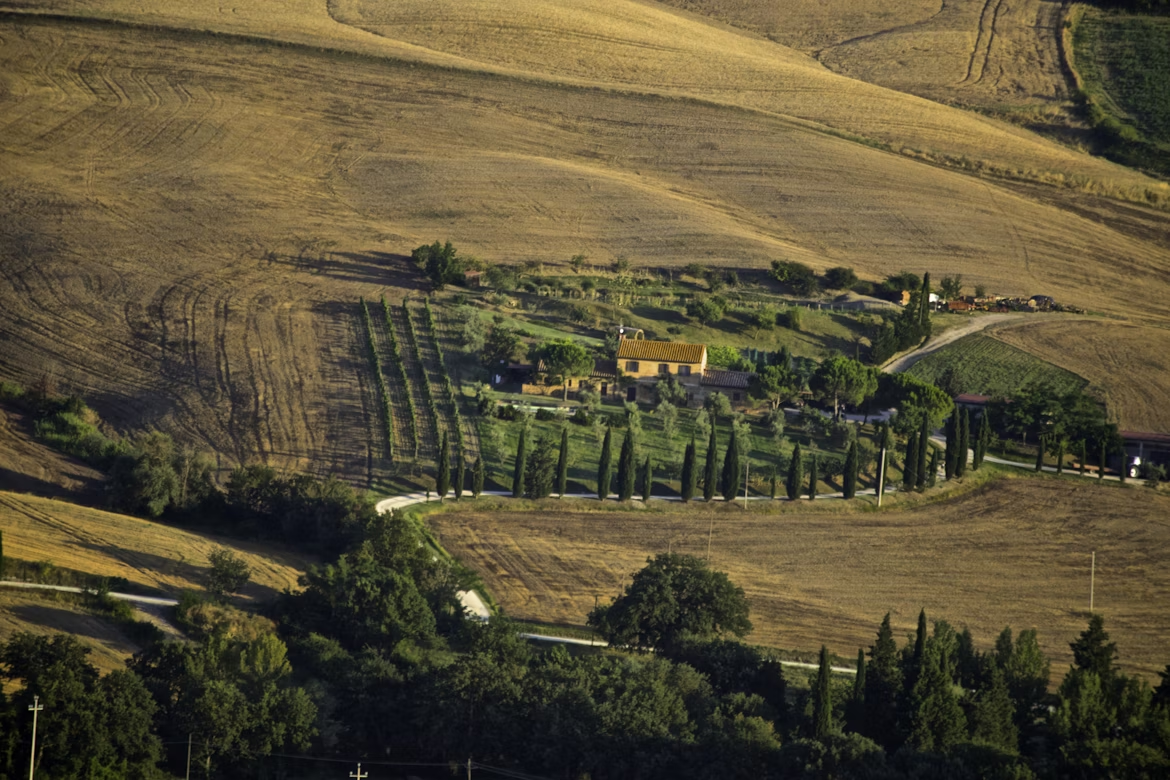
The Val d’Orcia in southern Tuscany is the postcard image of Italy—rolling hills, cypress-lined roads, and stone farmhouses. This region is famed for its wine, slow food, and photogenic villages like Pienza and Montalcino. Sip world-renowned Brunello di Montalcino while gazing over golden wheat fields and sun-drenched vineyards.
Location:Tuscany, south of Siena
Entry Fee: Free to explore region; wine tastings may cost €10–€25
Timing: Year-round, best in spring and fall
Estimated Time to Explore: 2–3 days
Don’t Miss:
- Wine tasting in Montepulciano
- Pecorino cheese in Pienza
- Sunset drives through the countryside
How to Reach:
- Rent a car from Florence or Siena
- Local buses are limited
Insider Tip: Stay at an agriturismo (farmstay) for a truly immersive Tuscan experience.
Suggested Read: Monuments in Italy
8. Naples & Pompeii
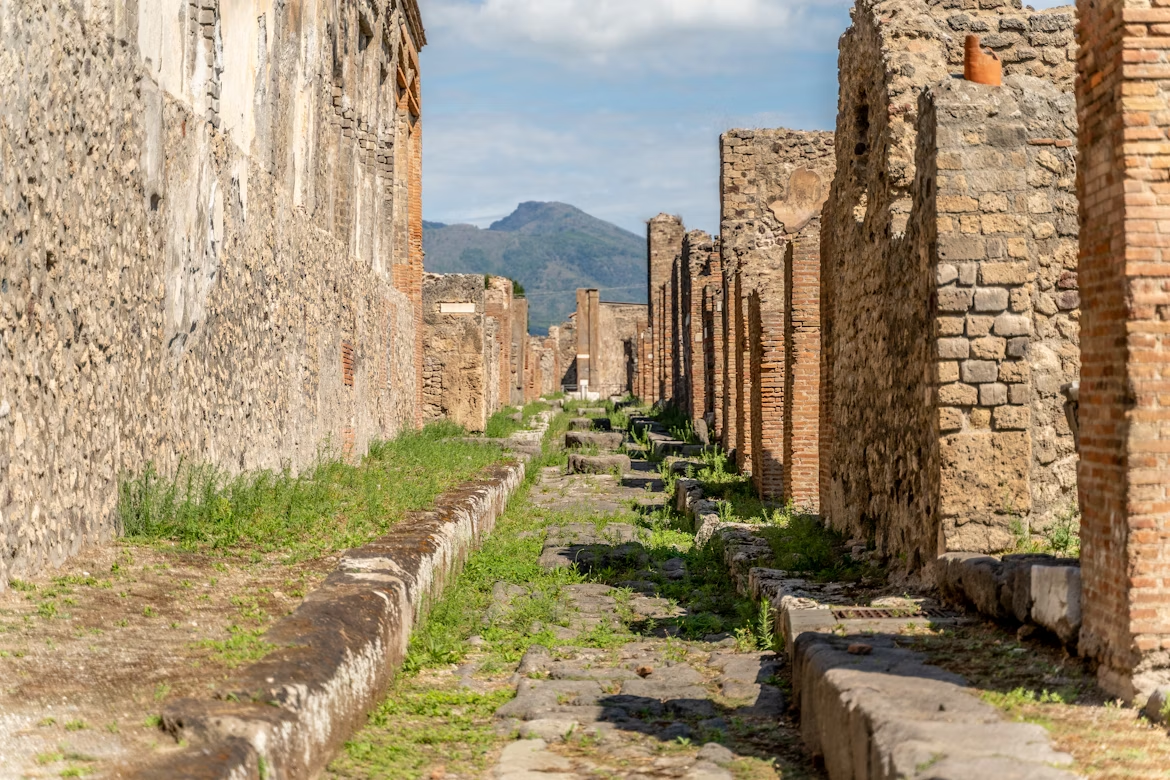
Naples is chaotic, charismatic, and the birthplace of pizza. Just 30 minutes away lie the ruins of Pompeii, an ancient Roman city frozen in time after the eruption of Mount Vesuvius in 79 AD. In Naples, centuries of history coexist with vibrant street life, baroque churches, and world-class archaeology museums. Pair a visit to Pompeii with a hike up Vesuvius for panoramic views and a deeper understanding of Italy’s explosive past.
Location:Campania region, Southern Italy
Entry Fee:
- Pompeii: €18 or approx. INR 1,620
- Naples National Archaeological Museum: €15 or approx. INR 1,350
Timing:
- Pompeii: 9:00 AM – 5:30 PM
Estimated Time to Explore: 1–2 days
Don’t Miss:
- Villa of the Mysteries in Pompeii
- Napoli Sotterranea (Underground Naples)
- Authentic Neapolitan pizza in the old town
How to Reach:
- Train to Naples Centrale
- Circumvesuviana train to Pompeii
Insider Tip: Combine a visit to Pompeii with Mount Vesuvius for panoramic views of the Bay of Naples.
9. Lake Como

Lake Como is elegance incarnate—alpine peaks, shimmering waters, and charming lakeside towns like Bellagio and Varenna. It’s a haven for travelers looking for luxury experiences in Italy. Stroll through manicured gardens at Villa Carlotta, cruise across the lake by ferry, or simply relax with an espresso by the water’s edge.
Location:Lombardy region, Northern Italy
Entry Fee: Free to visit towns; boat tours vary
Timing: Best between April and October
Estimated Time to Explore: 1–2 days
Don’t Miss:
- Villa Carlotta gardens in Tremezzo
- Ferry ride from Como to Bellagio
- Funicular to Brunate for lake views
How to Reach:
- Train to Como San Giovanni
- Ferries connect major towns
Insider Tip: Visit early in the day to avoid boat crowding, especially in summer weekends.
Suggested Read: Italy with Kids
10. Bologna
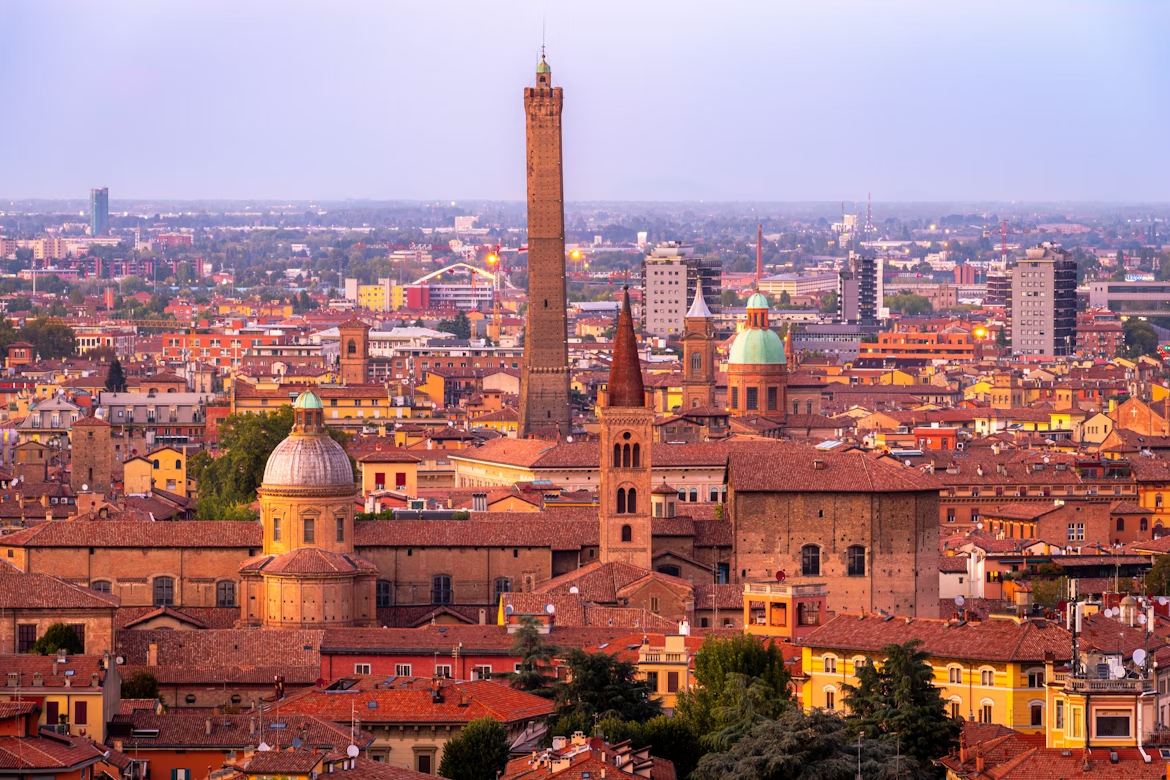
Bologna is Italy’s culinary capital, but it’s also packed with medieval towers, Renaissance arcades, and a youthful university vibe. It’s less touristy than Rome or Florence but equally rich in history and food. Don’t miss the chance to savor authentic tagliatelle al ragù—Bologna’s legendary pasta dish—in the city where it was born.
Location:Emilia-Romagna region, Northern Italy
Entry Fee: Free for most landmarks; Torre degli Asinelli climb €5 or approx. INR 450
Timing: Year-round
Estimated Time to Explore: 1–2 days
Don’t Miss:
- Climbing the leaning towers of Bologna
- Pasta-making classes (tagliatelle & tortellini)
- Piazza Maggiore and Neptune Fountain
How to Reach:
- Train to Bologna Centrale
- The city center is walkable
Insider Tip: Try a traditional ragu alla bolognese from a local trattoria—it’s not like spaghetti bolognese abroad!
Why Choose OneVasco?
OneVasco makes visa applications effortless. Our expert team manages the entire process, allowing you to focus on your journey.
Enjoy stress-free travel with fast visa approvals.
- Expert and Personalized Support
- Efficient and Hassle-Free Process
- Real-Time Tracking and Updates
- Transparent Communication
- Trusted by Millions
FAQs
1. What is the best time to visit Italy for sightseeing and pleasant weather?
The ideal time to explore Italy is during the spring (April to June) and autumn (September to October) seasons. These months offer mild temperatures, blooming landscapes, and fewer tourists compared to the summer rush. Spring is perfect for visiting gardens in Florence or exploring the Amalfi Coast’s trails. Autumn, on the other hand, is grape harvest season in Tuscany and ideal for cultural festivals across the country. Summers (July and August) can be extremely hot and crowded, especially in tourist-heavy areas like Rome, Venice, and Florence.
2. How many days should I plan for a well-rounded Italy itinerary?
To experience the diverse beauty—its cities, coastlines, countryside, and historical sites in Italy, allocate at least 10 to 14 days. A two-week itinerary allows you to cover major cities like Rome, Venice, Milan, and Florence, and still explore regional gems such as Cinque Terre, Tuscany, the Amalfi Coast, or Sicily. Shorter trips (5–7 days) can focus on 2–3 cities or one region for a more relaxed pace.
3. Is traveling by train a good way to explore Italy?
Yes, Italy’s train system is one of the best in Europe, with high-speed connections between major cities (Trenitalia and Italo). Traveling by train is fast, affordable, and scenic—especially when heading through Tuscany or the lakes region. For small towns like Assisi, Alberobello, or Orvieto, regional trains or a combination of train and bus are convenient. Trains also help you avoid city traffic and expensive parking fees.
4. Which are the must-visit historical and UNESCO World Heritage sites in Italy?
Italy has the highest number of UNESCO World Heritage sites in the world. Don’t miss the Colosseum and Roman Forum in Rome, Pompeii and Herculaneum near Naples, Venice and its lagoon, Florence’s historic center, the Vatican City, and the trulli houses of Alberobello. Each region boasts centuries of history—from Roman ruins to Renaissance masterpieces and Baroque cathedrals.
5. What are the most beautiful coastal places in Italy?
Italy’s coastlines are nothing short of spectacular. The Amalfi Coast, with cliffside villages like Positano and Ravello, is world-famous for its beauty. Cinque Terre offers colorful fishing villages along rugged cliffs. Sardinia and Sicily feature white-sand beaches and turquoise waters. For a serene lakeside setting, Lake Como and Sirmione on Lake Garda offer romantic views and historic villas.
6. Do I need to book tickets for popular attractions in advance?
Yes, especially for places like the Vatican Museums and Sistine Chapel, Uffizi Gallery in Florence, the Colosseum in Rome, and the Leaning Tower of Pisa. Booking tickets online not only secures your spot but also lets you skip long queues, which can save hours during peak travel months.
7. What are the must-try local foods in Italy?
Italy is a food lover’s paradise, with every region offering its own culinary specialties. Try Neapolitan pizza in Naples, risotto alla milanese in Milan, pasta carbonara in Rome, bistecca alla fiorentina in Florence, truffle dishes in Umbria, and fresh seafood in Sicily and the Amalfi Coast. Don’t forget to sample gelato, espresso, and regional wines throughout your journey to the best places to visit in Italy.





